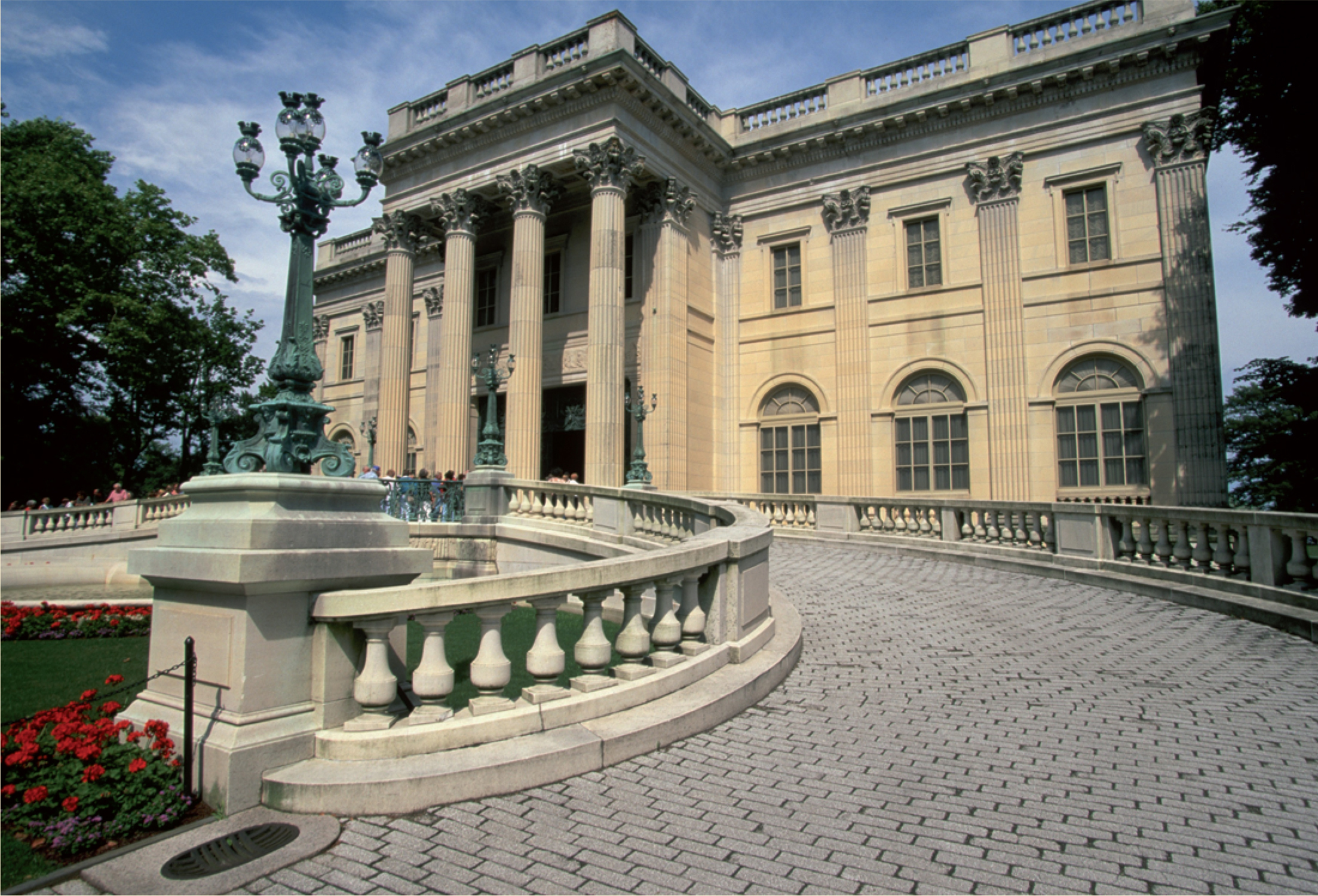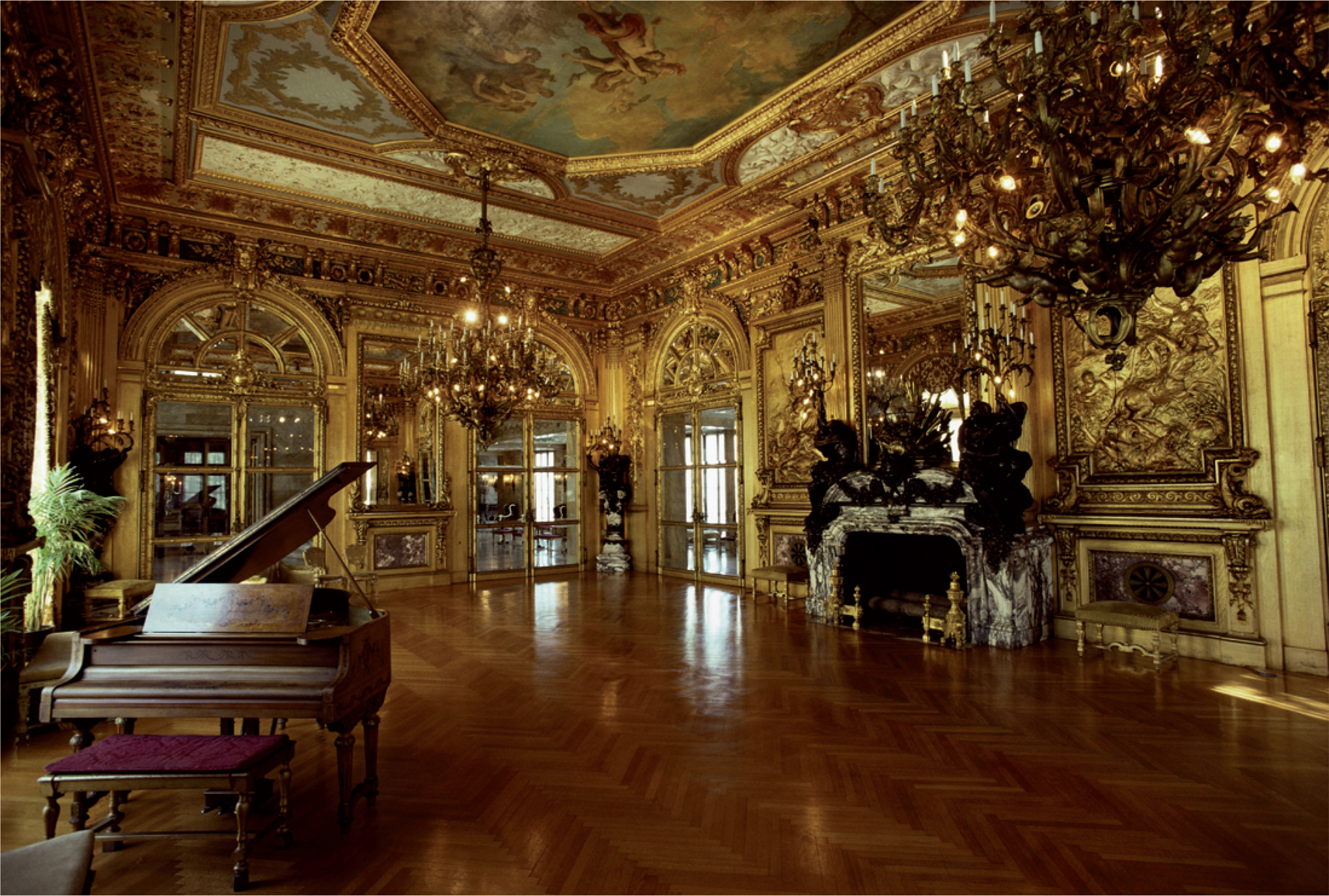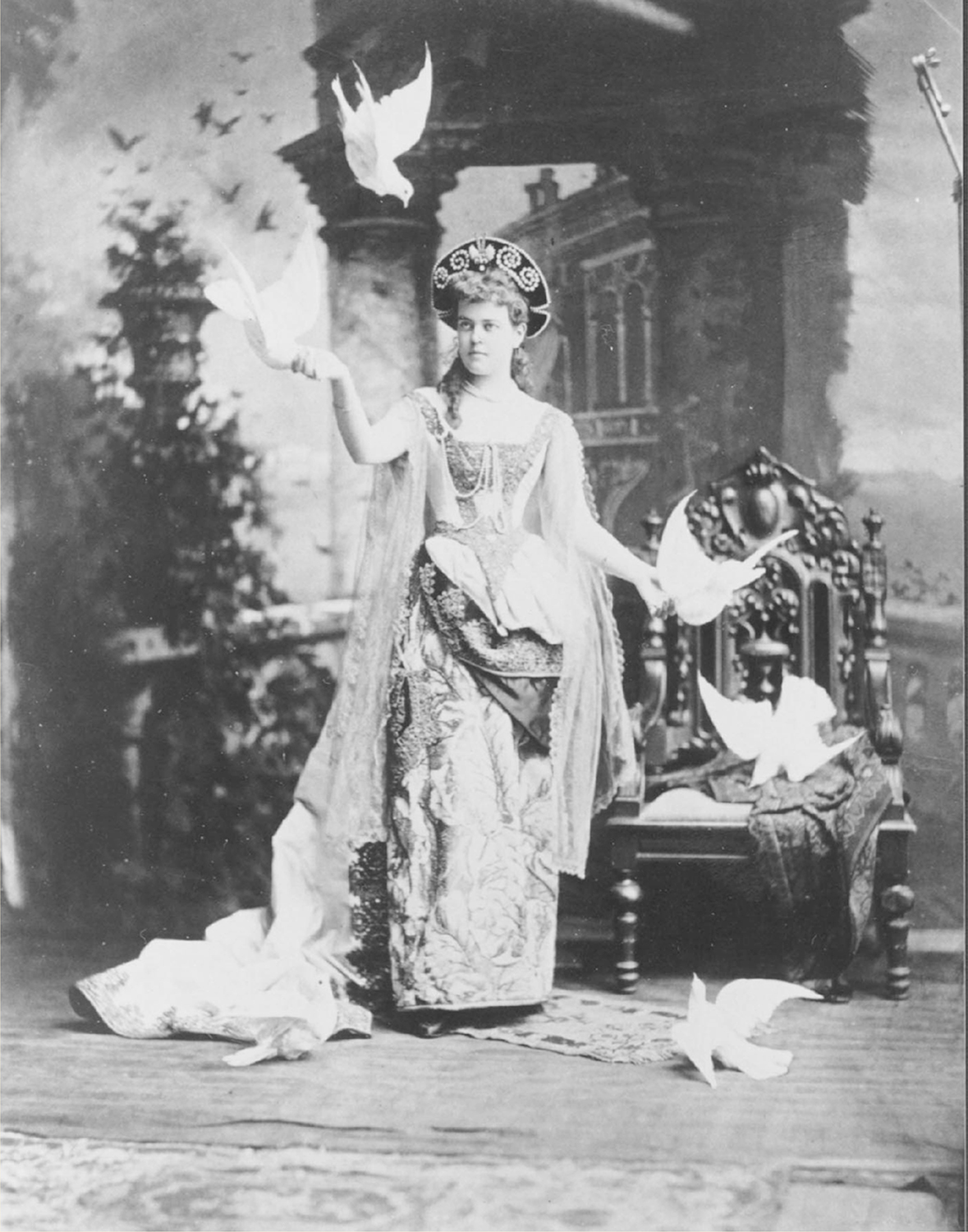The American Promise:
Printed Page 498
VISUALIZING HISTORY
Alva Vanderbilt and the Gilded Age
Nothing represented the Gilded Age better than the Gold Room of Marble House, the “cottage” Alva Vanderbilt opened in Newport, Rhode Island, in 1892. William K. Vanderbilt, Alva’s husband, was the grandson of Cornelius Vanderbilt, the founder of the New York Central Railway and the richest man of his era. His sons doubled his wealth, and his grandsons spent it lavishly. Alva, who modeled Marble House after Marie Antoinette’s retreat Petit Trianon at the palace of Versailles, liked to describe her architectural triumph as “Versailles improved.”


The Gold Room, Alva’s miniature version of Versailles’s Hall of Mirrors, is a riot of neoclassical exuberance, with panels of Greek gods and goddesses adorning the walls and cavorting cupids and cherubs blowing trumpets on the walls and ceilings. The enormous chandeliers and wood panels painted in red, green, and gold are multiplied in their dazzling glory in the mirrors hung over each of the four doors, above the mantelpiece, and on the south wall. The Vanderbilt wealth and Alva’s lavish spending made it hard for old-

SOURCE: Marble House: © Dave G. Houser/Corbis; Gold Room: © Kelly-
Questions for Analysis
- Why might Alva have chosen to model her Newport home after a French queen’s château?
- Why do you think Alva chose classical figures for decoration?
- Critics charged that Marble House, with its Gold Room, was “a symbol of the heartless, glittering emptiness of the Gilded Age.” What did they mean by this criticism?
Connect to the Big Idea
What economic changes took place in the Gilded Age that allowed for lavish personal wealth?